Gardening for wildlife
Text and photographs Charles and Julia Botha (or as credited)
Have you ever stopped to consider that the environment actually starts in your own garden? In this article we would like to introduce readers to the joys of environmentally-friendly gardening and show them how easy it is to attract a wide variety of wildlife to a garden (even a small city one!).
Birds are what first come to mind when we think of garden wildlife. Because these are so beautiful and interesting, many people wish to draw them into the garden and can’t understand why they are often unsuccessful. Colourful shrubs, well-trimmed trees, neatly rolled lawns and tidy, well-tended flower beds – they believe this is just the perfect place for birds to move in. What a pity for their sake that the birds seldom agree! Others, with similar gardens, are very proud of their “many” birds usually mainly doves, sparrows, bulbuls and of course mynahs or starlings. Alternatively, people with this type of garden are those more fortunate who live near a nature reserve, some indigenous bush or someone else with an environmentally-friendly garden. Forgetting that birds fly from one spot to another, these gardeners suffer from the illusion that it is their well-manicured garden which is attracting the selection of birds to the area.
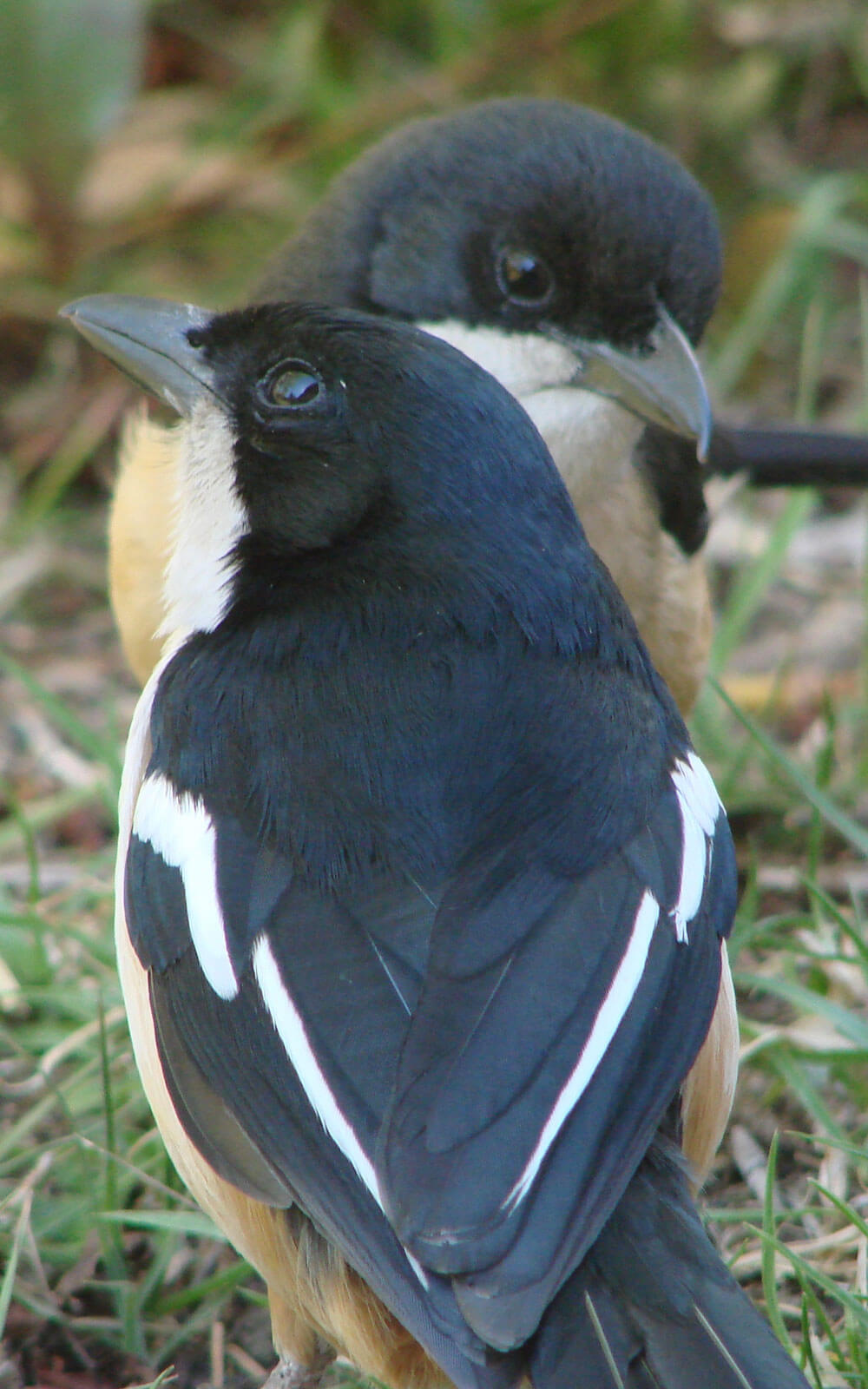
As they are very secretive, you are more likely to hear the duet calls of Southern Boubous, than to see them. They prefer well-wooded gardens with lots of insect food and even eat snails.
Although there is considerable overlap, garden birds can be broadly divided into five groups according to their eating habits: fruit-eaters, seed-eaters, nectar-eaters, insect-eaters and birds of prey. Of these food sources, insects are by far the most important as virtually all garden birds will use the opportunity to eat the right insect when it is available. Even seed-eaters, such as doves, or fruit-eaters, such as mousebirds, will surprise birders by changing their diet when a protein rich meal, for example flying termites, presents itself. Insects form a substantial part of the diet of nectar-eaters, such as sunbirds, and the majority of species of garden birds rely on insects to feed their nestlings. In addition, some of the most attractive garden birds, such as cuckoos, robins, flycatchers etc. are mainly insect eaters.
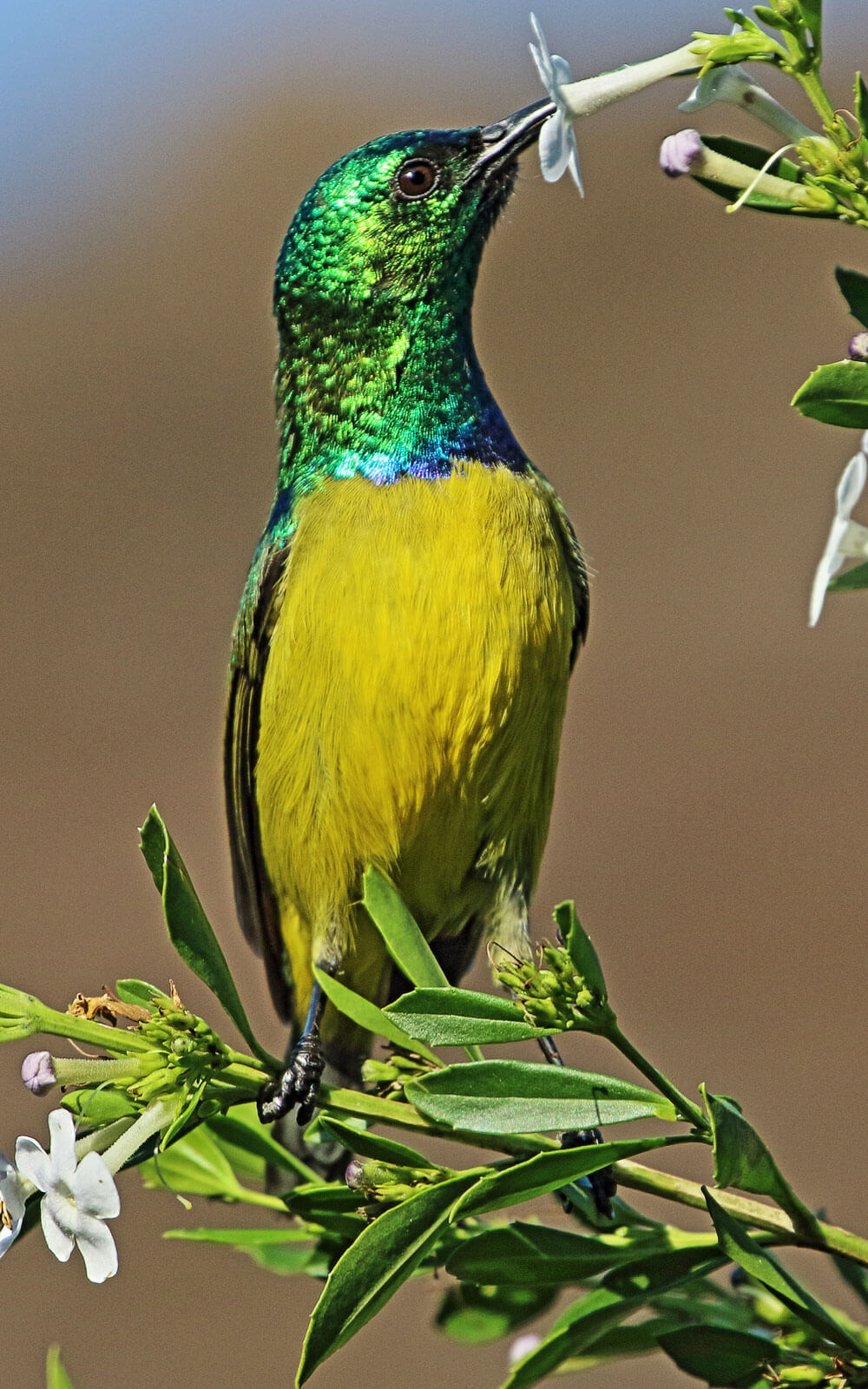
The Collared Sunbird is one of many species attracted to gardens with nectar-producing plants. But nectar-eaters also need insects to survive.
Photo: Paolo Candotti
However, if you have an environmentally-friendly garden, it will not only be birds that you attract. Some of the other smaller creatures, that will also visit, can supply you with endless interest and amusement in your own “miniature nature reserve”. Nature provides us with its own pesticides in the form of a large variety of predators, ranging from fierce insects, such as assassin bugs, to lizards and hedgehogs.
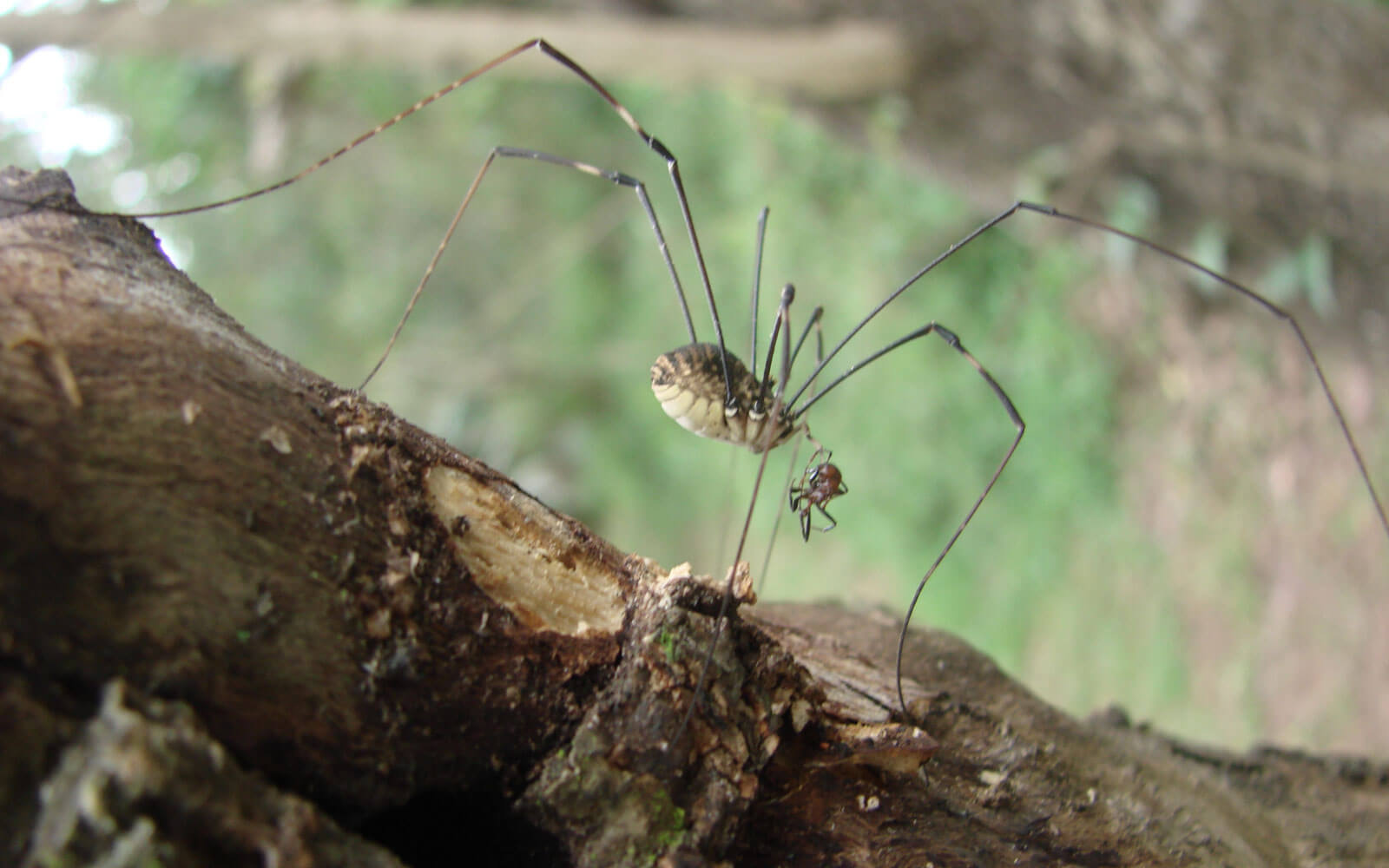
Found in “foresty” gardens, harvestmen are often mistaken for spiders. Small insects, especially aphids, are included in their diet.
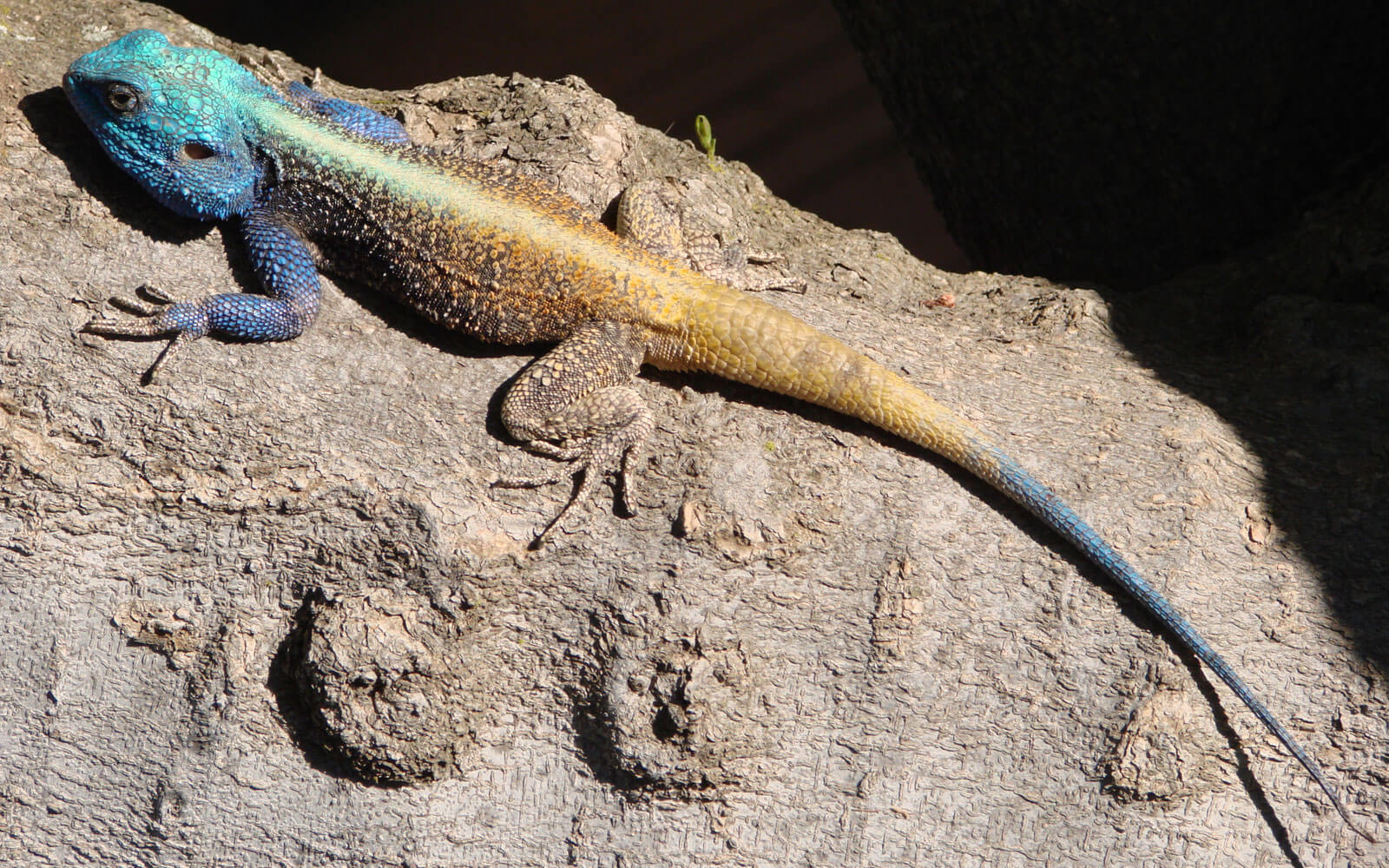
Tree agamas (the striking blue head is only found in male tree agamas), as well as the less colourful rock agamas, are voracious garden predators.
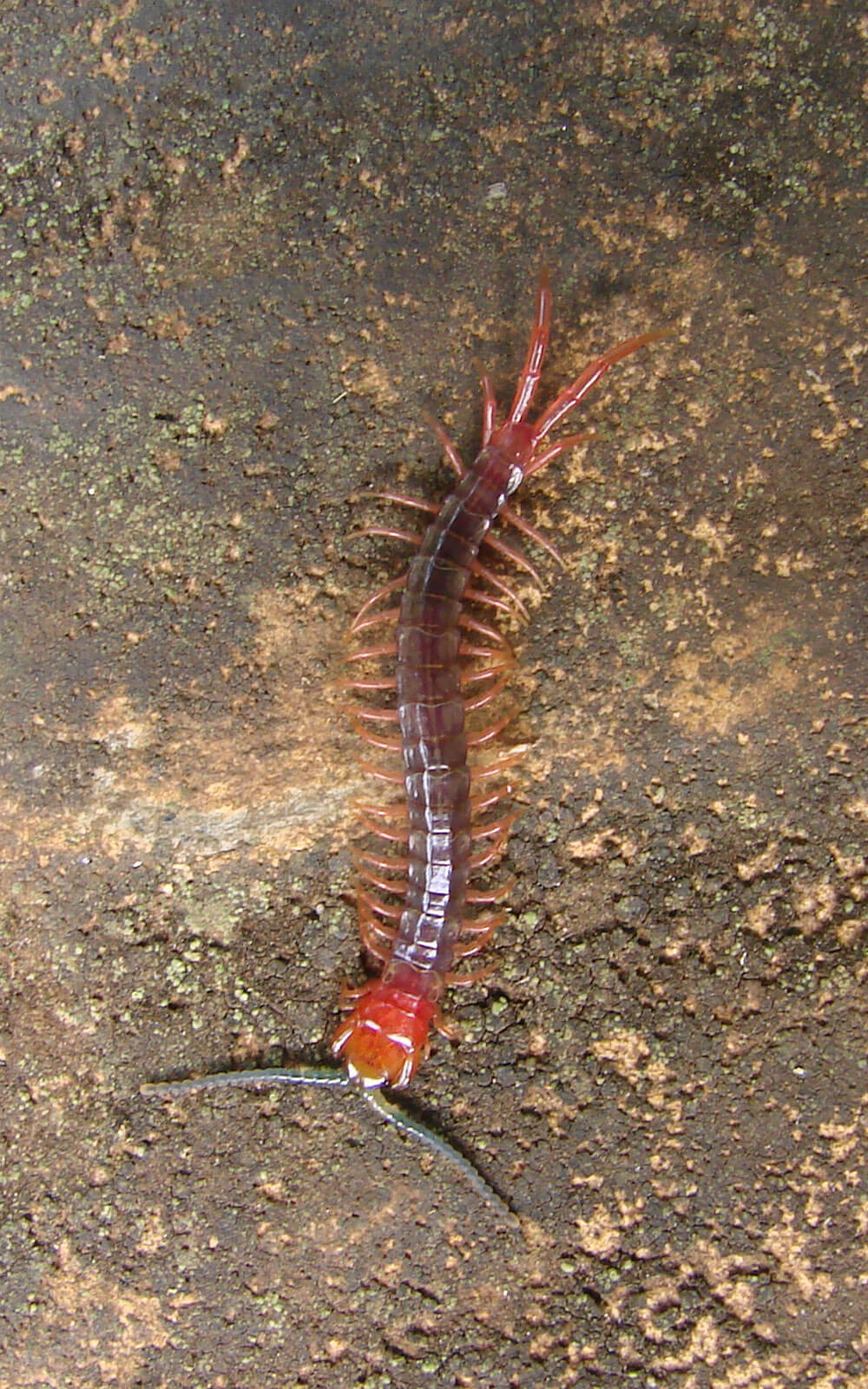
Observed mainly in composty areas of the garden, centipedes feed on a wide variety of insects and are, in turn, eaten by birds.
So the first important principle is: get indigenous plants that attract insects. This is a totally different mindset to that of conventional gardening, where virtually every “creepy-crawly” gets eliminated. Now you have to plant for the insects! If you don’t have a garden rich in insect life, your variety of bird species and other wildlife will remain low, unless there is a good insect food source nearby. This means NO POISONS – not even the so-called environmentally-friendly ones as these will also harm the predatory insects. For a more detailed view on this point please do read our article “Poison is Poison” which was published in the Summer-Autumn 2021 edition of The Leopard’s Echo. If you have a garden where all the predators have been eliminated, there will be a frustrating period waiting for them to return after you stop using poisons. Some may arrive soon, others may take years, and some may never return if there is no source nearby. Someone with an environmentally-friendly garden may be willing to give you some of their excess predators, but never, ever take a creature from a nature reserve. Of course there are also imported insect pests which are not readily eaten by our predators and which have no local natural enemies. It is best to remove these by hand.
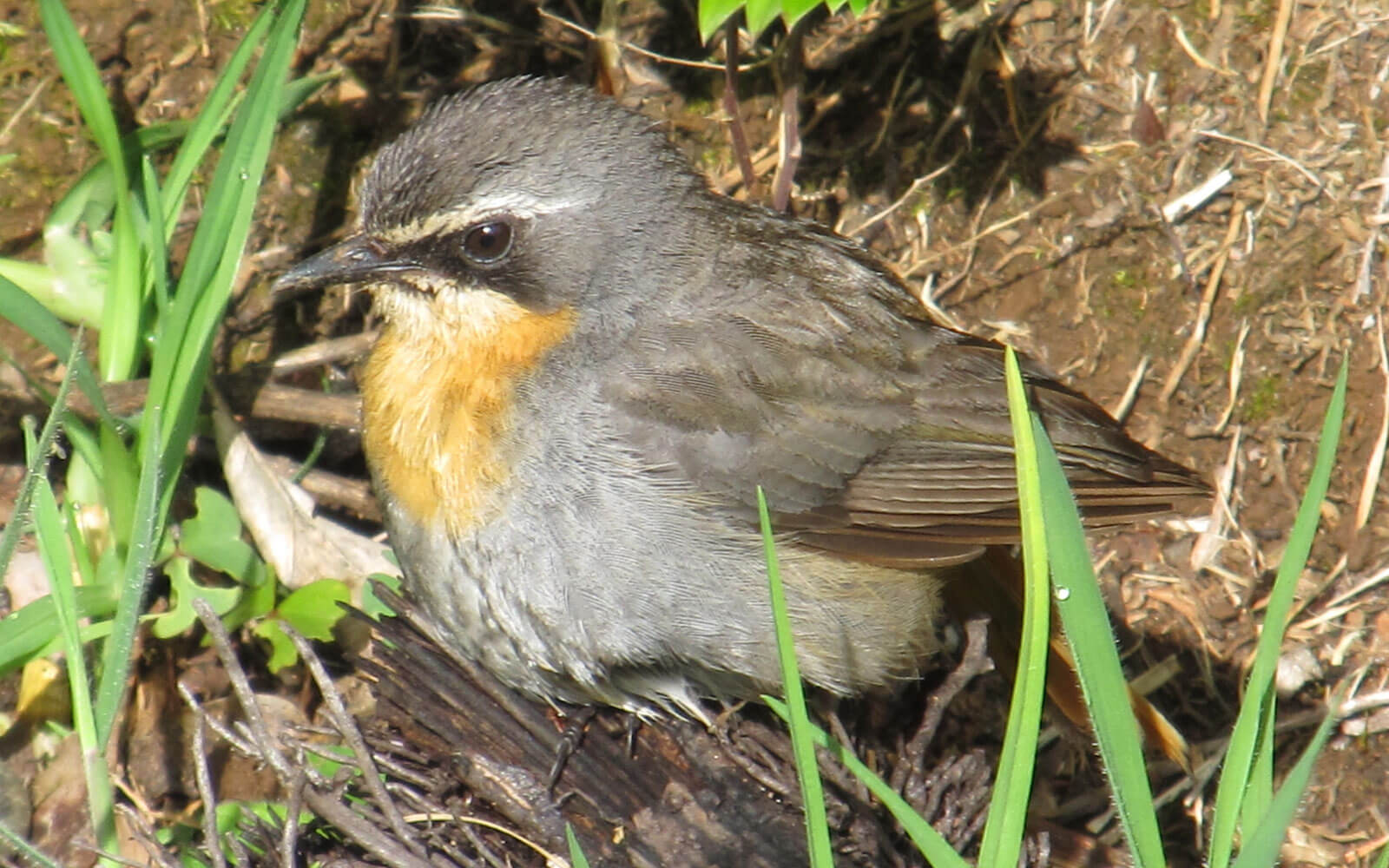
Ants make up over 90% of the diet of Cape Robin-Chats.
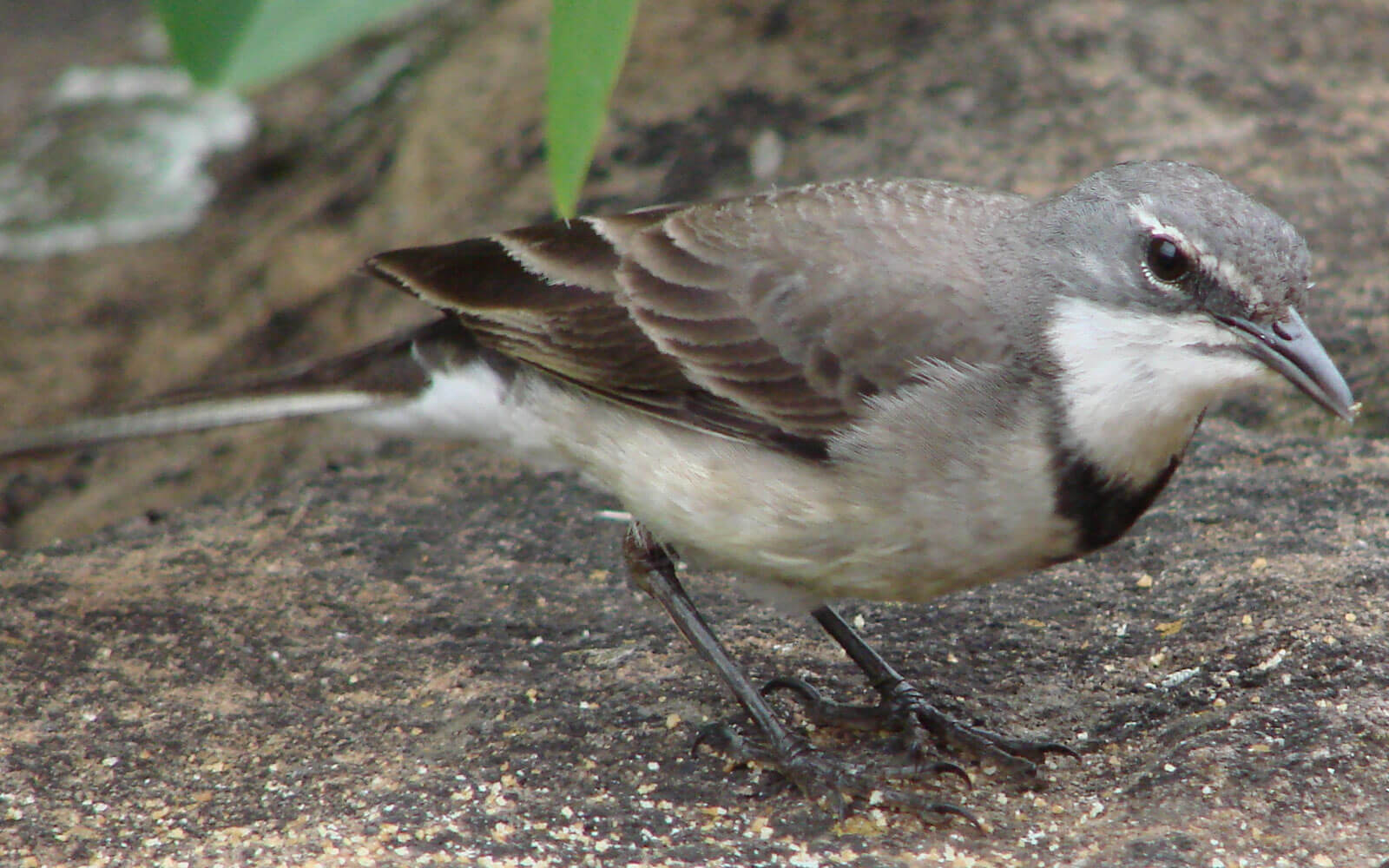
The number of wagtails seen in urban gardens has declined drastically mainly due to the use of weed killers and insecticides sprayed onto lawns.
One good reason for planting indigenous is that our plants are unlikely to be destroyed by our insects as they have evolved together. In fact, indigenous plants are frequently stimulated to grow faster when attacked by the right insects. Alien (exotic) plants in the garden, often fall into one of two categories:
- Because the environment is unsuitable, they have to be pampered with water, fertiliser and insecticides
- Because the environment is very suitable, and they have no natural enemies, they may get out of hand and spread uncontrolled, eventually replacing our indigenous vegetation. As these invasive alien plants only support a limited number of creatures, they have indirectly caused certain birds, mammals and insects to become endangered.
Many invasive alien species were introduced into South Africa intentionally for domestic uses such as ornamentals, windbreaks or to bind the soil. We now know that this was done in ignorance, because there is a wide variety of indigenous plants that can fulfil these functions. The problem has become so serious that, even in nature reserves, alien invaders are threatening our natural bush. Millions of Rands are spent annually on eliminating them from reserves and farmlands. As the farmer obviously has to cover these expenses, the cost is passed on in the price of food to you, the consumer. Even a portion of property rates is used by some local authorities to finance their war against these fierce adversaries. Likewise, conservation authorities have to divert funds to this problem, instead of using them on more constructive conservation issues. Invasive alien plants pose as big a challenge as any other form of pollution, and it is now recognised internationally that this biotic pollution is one of the greatest threats to the ecological and economic well being of the planet.
It is therefore essential that we try to control invasive alien plants and decrease their impact on our environment, which is already under severe pressure. Legislation requires that landowners are legally responsible for the control of alien invader plants on their properties. And this includes urban gardens! Some common species of invaders, which are sometimes still popular with gardeners, will be mentioned in future articles of this series. But always keep in mind that today’s pretty exotic garden flower may very likely be tomorrow’s environmental nightmare!
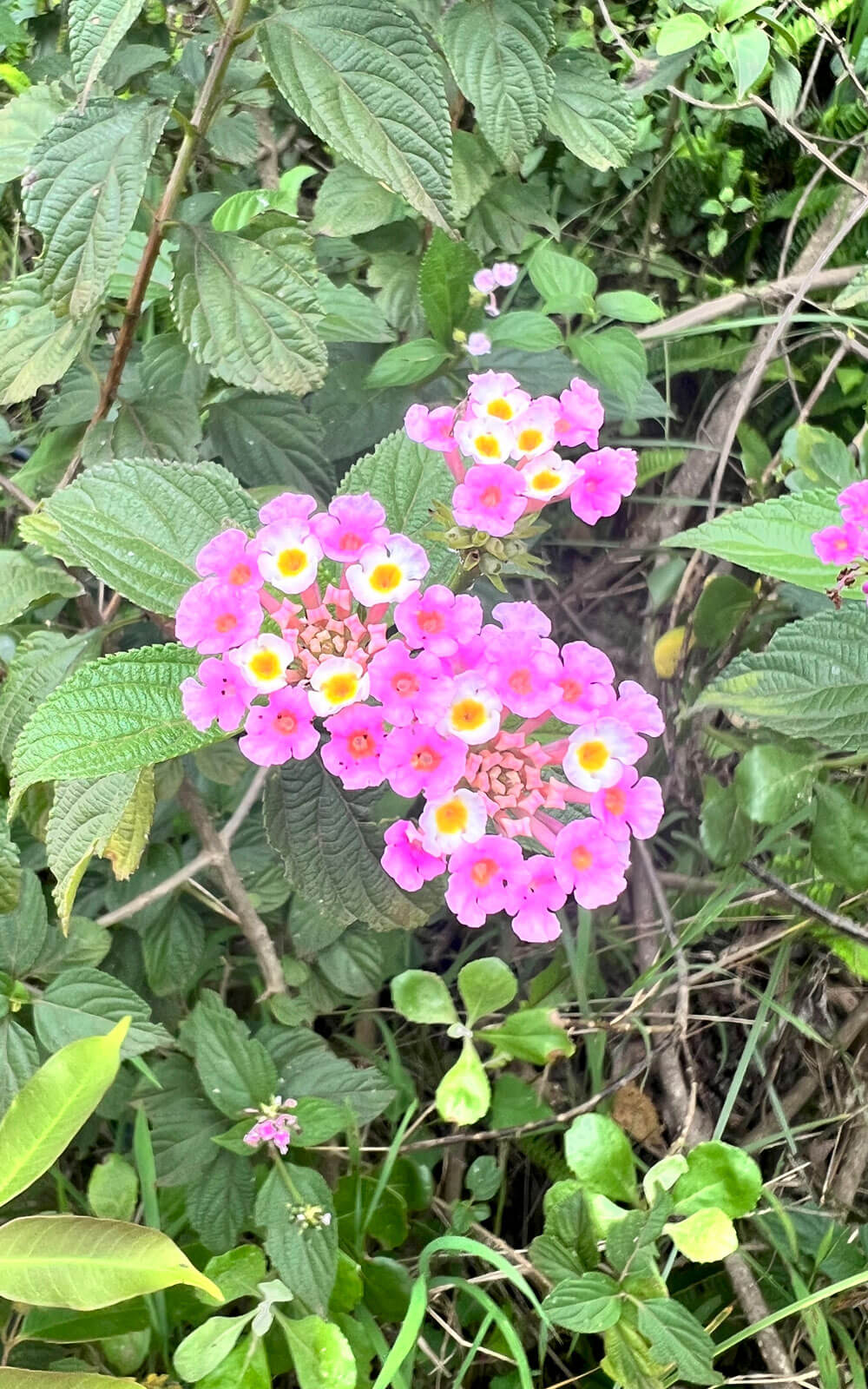
Now considered one of the world’s worst weeds, Lantana camara arrived in this country as a pretty garden flower. It is one of the most aggressive and problematic invasive species in the Durban area.
Photo: Paolo Candotti
Another important issue is not only to plant indigenous, but to stick to locally indigenous, in other words you should concentrate on the plants that occur naturally in your area. (This is not to be confused with endemic, which term refers to plants that occur only in a particular region and nowhere else in the world.) Many insects, such as butterflies, moths and beetles, are often “host specific” and their larvae (caterpillars) must eat certain species of plants to survive. For example, a butterfly’s distribution area is almost always within the natural area of its larval host-plant. If you plant indigenous vegetation out of its natural area, you can’t expect to attract its associated butterfly species. The butterflies are not going to fly for miles, in convoy from their natural distribution area, just because you have their larval host-plant in your garden! Some would dub it a “purist” attitude to say that gardeners, who proudly plant indigenous vegetation outside its natural area, are missing the point of planting indigenous. However, calling it “common sense” would probably be more accurate.
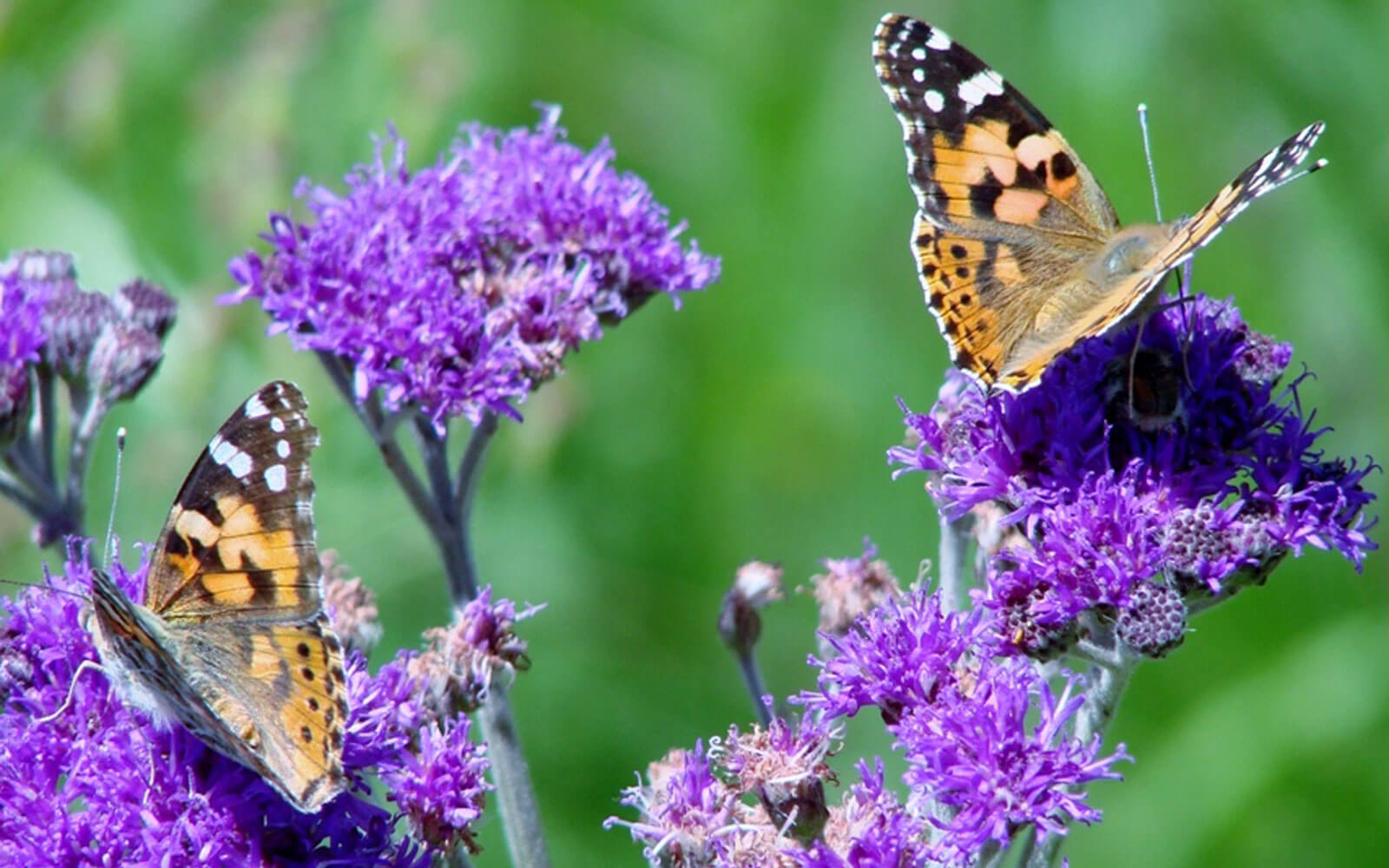
Most butterflies are host-plant specific, but the Painted Lady Vanessa cardui will lay eggs on a wide variety of vegetation.
Like most insects, butterflies, and especially their larvae, are part of the food chain and they fall prey to many creatures including birds, lizards, frogs, spiders, praying mantids, robber flies, wasps and ants to name but a few. For them it is a dangerous world because they are vulnerable to various different enemies throughout their life cycle, from egg to adulthood. For example, although minute to us, butterfly eggs provide a hearty meal for a ladybird beetle. In nature, without human interference, only 2% of the hundreds of eggs laid by each female survive to become reproductive adults. In this way, butterfly numbers usually remain reasonably constant. A 98% loss of descendants sounds drastic, but actually indicates what an important food source they are for other creatures.
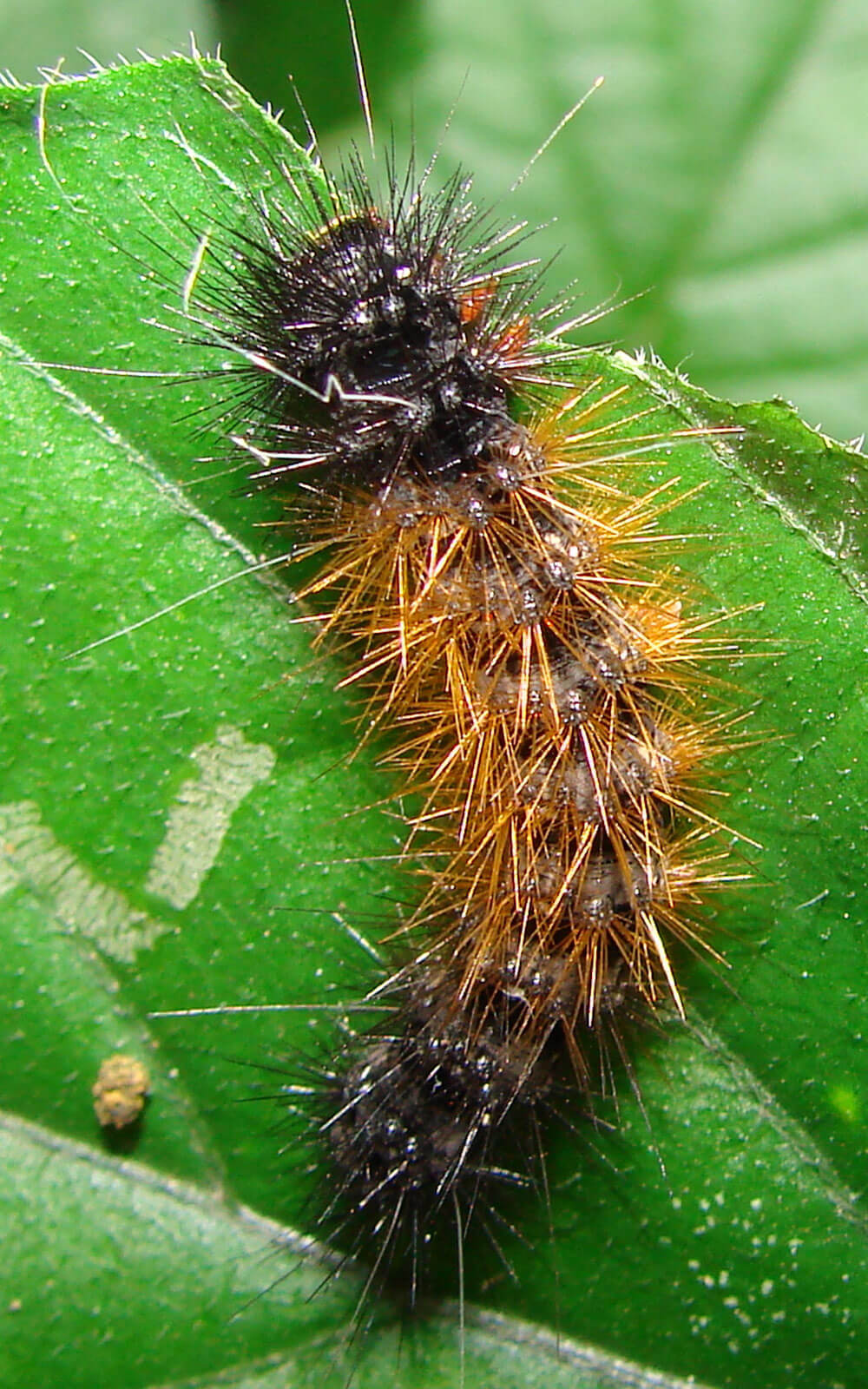
Hairy caterpillars are popular with the Red-chested Cuckoo, also known as “Piet-my-vrou”.
Besides all these benefits, the beauty of a butterfly can be compared to that of the most colourful flower any garden can produce. Butterflies can indeed be thought of as flying flowers! Of course, what butterflies and their larvae find appealing may not be attractive from a gardener’s point of view. Indeed, an enthusiastic “wow” response from humans may translate into a painful “ow” for butterflies. Some gardeners, especially those who take part in exhibitions such as garden shows, don’t consider perforated leaves very desirable. But this is what plants look like in nature.
By carefully selecting your plants you will bring birds and insects, including the bonus of beautiful butterflies, to your garden. Fruit- and seed-eating birds are the easiest to attract, and appropriate planting will make your feeding trays obsolete. This is probably a good thing, as some overseas research has shown that the offspring of certain garden bird species do not develop properly because of the “junk food” they are fed from these trays. Feeding birds regularly, and with large quantities, also has the disadvantage of creating an artificial situation with an imbalance in the bird population, resulting in an overpopulation of certain species. For example, the doves often become too numerous. A further problem associated with artificial feeding is that the birds may become dependent on the daily handouts and may suffer, or perish, when you stop feeding for some reason.
Food left out for birds can also attract unwanted creatures, like the alien Norwegian rat and a few other similar foreign species, such as the house rat and house mouse. All are prolific breeders and notorious problems across the world. These unwanted pests are actually likely to harm the intended beneficiaries, because they are known to kill smaller wild birds and their nestlings. As the alien rodents usually carry out their evil deeds unobtrusively, under cover of darkness, gardeners remain unaware of their many victims. However, do not confuse these rodent culprits with our harmless indigenous species which should be welcomed into the garden. Kloof Conservancy advocates for a “no feeding approach” and you can find more details in an article, “What to Feed Garden Birds” which we wrote on this subject for the 2022 Winter-Spring edition of The Leopard’s Echo.
In future editions we hope to bring you more articles in which we will also discuss “multipurpose plants” (attracting several categories of feeders) as well as “instant wildlife plants” that will give you quick results. Also included will be some trees recommended to persuade your feathered friends that your garden is just the right place to build a home and raise their children!
Reprinted with permission from African Wildlife & Environment magazine issue # 78 (2021).
The journal of the Wildlife & Environment Society. Please support www.wessa.org.za.

About the authors
Charles and Julia Botha are the authors of Bring Nature Back to your Garden of which the first edition won a University of KwaZulu-Natal book prize for popularising science. It explains the important conservation-friendly gardening principles in easy-to-understand, non-scientific language and has now been split into two editions: one for the western part of the country and another for the eastern and northern regions. There is also an isiZulu edition. Their follow up book Bring Butterflies Back to your Garden, describes over 500 recorded butterfly larval host-plants. All proceeds of their books go to the Botanical Education Trust, which funds research aimed at conserving South Africa’s indigenous flora. The books are available from the Flora & Fauna Publication Trust or request your local bookstore to stock them!